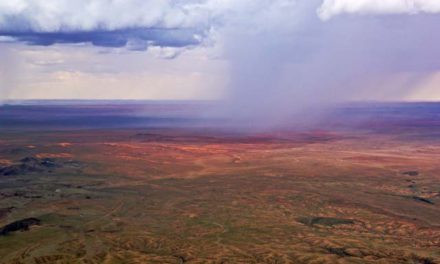
Met experts expect improved rainfall season for most of SADC

By Egline Tauya of the Southern African Research and Documentation Centre (SARDC).
SANF – At this point, the regional rainfall pattern for the 2020/21 agricultural season is encouraging as the bulk of southern Africa is expected to receive adequate rainfall throughout the growing season.
This is an improvement from the previous season when less rainfall resulted in adverse impact on agriculture, water resources and hydropower generation in most of the region.
The latest outlook produced by regional climate experts forecasts that there will be normal to-above-normal rainfall across most of the Southern African Development Community (SADC) between October 2020 and March 2021.
The consensus forecast was produced by the 24th Southern African Regional Climate Outlook Forum (SARCOF 24) that met virtually on 27-28 August.
The SARCOF forecast is divided into two seasons covering October November December (OND) 2020 and January February March (JFM) 2021.
The forecast shows that most of the SADC region is likely to receive normal to above-normal rain between October and December, although north-western Angola, a large part of the Democratic Republic of Congo, eastern Madagascar, northern Malawi, northern Mozambique, the Seychelles, Tanzania, and north-eastern Zambia are forecast to receive normal to below-normal.
Above-normal rainfall is defined as being within the wettest third of historically recorded rainfall while below-normal is within the driest third of rainfall. Normal is rainfall is within the middle third.
The second half of the agricultural season, which covers the period January to March 2021, is expected to receive normal to above-normal rainfall for the entire SADC region.
The prospects of adequate rainfall means that the region is likely to experience a good harvest during the 2020/21 agricultural season.
Based on the forecast, governments in the region are encouraged to ensure adequate availability of farming inputs such as seeds and fertilizers. The experts also noted the need to upgrade storage facilities to reduce harvest losses.
The positive forecast points to improvement of river flows and dam levels in most parts of the SADC region, a development that is crucial for irrigation.
But the experts also warned of the likelihood of flash floods in low-lying areas of the entire region, especially during the second half of the season.
Based on this potential threat, the experts advised member states to be proactive with their disaster risk management plans to ensure they are prepared when the need arises for evacuating people and livestock to higher ground.
Farmers in flood-prone areas are encouraged to plant upland and undertake good land management.
The experts also warned that heavy rains are often accompanied by outbreaks of crop and livestock pests and diseases.
In this regard, governments are encouraged to stockpile chemicals and other pesticides as well as to ensure regular dipping of livestock and to apply pest control for crops.
In the regions expected to experience below-normal rainfall in the first half of the agricultural season, farmers are encouraged to plant short-season varieties as there will be a delayed onset of the rain season in these areas.
In drafting the outlook for the 2020/21 season, the climate scientists took into account oceanic and atmospheric factors that influence the climate over the SADC region, including the El Niño-Southern Oscillation (ENSO), which is currently in its neutral phase but inching towards La Nina.
Other factors are an increased chance of a negative Indian Ocean Dipole (IOD) and a neutral Subtropical Indian Ocean Dipole (SIOD) by the end of March 2021.
The IOD is an irregular oscillation of sea surface temperatures in which the western Indian Ocean becomes alternately warmer (positive phase) and then colder (negative phase) than the eastern part near Indonesia, while the SIOD is the oscillation of sea surface temperatures in which the south-west Indian Ocean, is warmer and then colder than the eastern part of the ocean.
Local and month-to-month variations are expected to occur and farmers and other users of the SARCOF-24 forecast are advised to contact their national meteorological and hydrological services for interpretation of the outlook.
The rainfall outlook was prepared by climate scientists from national meteorological and hydrological services from SADC member states as well as experts from the SADC Climate Service Centre.
The SARCOF-24 meeting was convened under the theme Sustaining Climate Services in the SADC Region during a Pandemic.
Southern African News Features are produced by the Southern African Research and Documentation Centre (SARDC) based in Harare. Website at www.sardc.net.












































